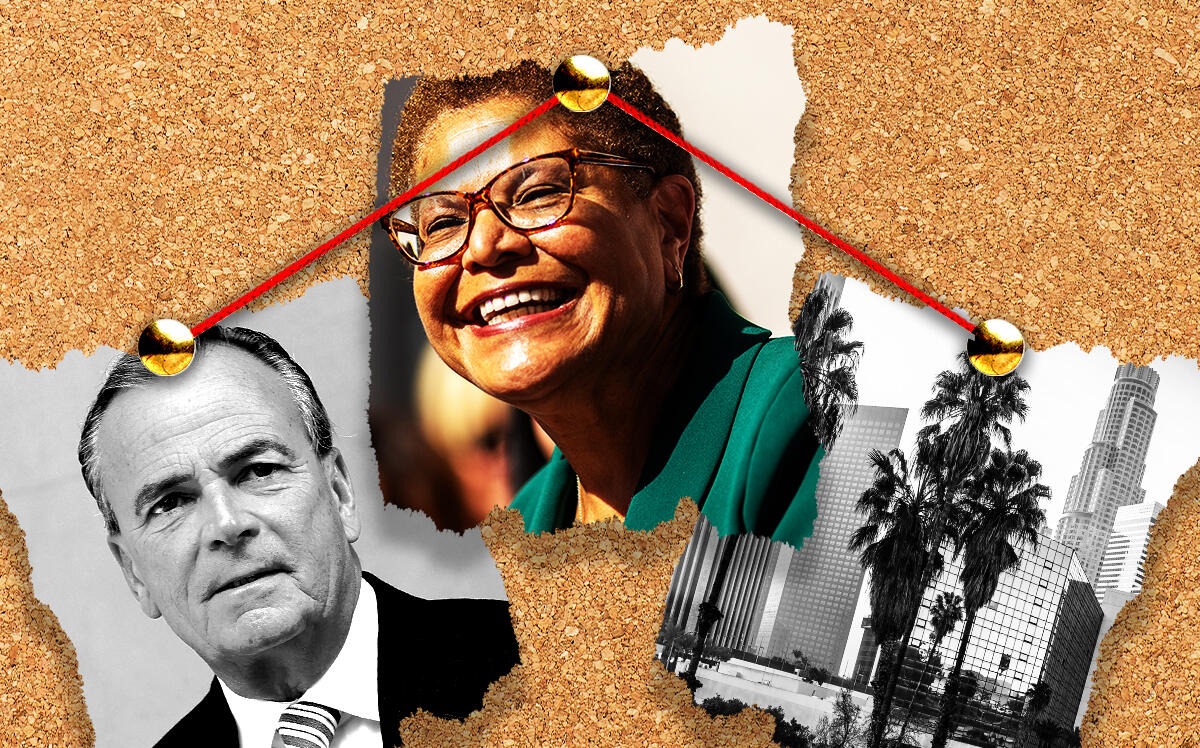
Trending
Election 2022: What does it mean for LA real estate?
LA’s transfer tax is in, developer Rick Caruso is out

After months of signature-gathering and door-knocking, hundreds of millions of dollars spent and untold hours of backroom lobbying, the Nov. 8 election — or, more accurately, the November-ish election, because of California’s slow but inclusive vote counting — has finally wrapped.
So what do the results mean for SoCal real estate? Here’s a TRD breakdown of some of the key local contests.
L.A.’s “mansion tax”
Of dozens of races across the region — for Congress, city council, school board, whatever — none is likely to have a more significant real estate impact than Measure ULA, a city of Los Angeles ballot proposal that passed with roughly 58 percent of voter support.
The measure made it on the ballot with the support of a wide coalition of labor and community groups, and is intended as a strong mechanism to help fight L.A.’s homeless crisis: By applying a new real estate property transfer tax on all sales in the city above $5 million, advocates say the measure will raise as much as $1 billion annually to pay for affordable, homelessness housing and related programs.
“This city ballot initiative,” one group advocating it wrote, “is a once-in-a-generation chance to end housing insecurity in Los Angeles.”
But many in the housing industry see it as a once-in-a-generation sign of doom. The measure applies to both commercial and residential properties, and the tax is fairly steep — 4 percent on deals above $5 million, and 5.5 percent on deals above $10 million. Although the tax will surely benefit some affordable housing developers, most of the industry fought it bitterly, warning it would cool the city’s market and drive wealthy people elsewhere, while some market-rate developers have already started pulling projects.
“It’s a perfect storm,” Travis Traweek, a broker at Stepp Commercial, said of the measure. “People already want to leave L.A.”
Santa Monica’s transfer tax
L.A. won’t be the only city with a new transfer tax. In Santa Monica, which is struggling with its own homelessness and affordable housing crisis, two competing proposals were on the ballot.
Measure GS, which had been pushed by Mayor Sue Himmelrich — a longtime affordable housing proponent — and was the more aggressive of the two, ended up passing. As with L.A.’s Measure ULA, the new tax will apply to both commercial and residential deals, although the threshold is higher. It adds a 5.6 percent tax to deals above $8 million.
The new tax is expected to raise around $50 million annually, with the revenue earmarked for both homelessness and public school funding. Many industry players also opposed this one.
Santa Monica’s rent control
Santa Monica’s ballot had more real estate measures. The coastal city has long had a strong NIMBY homeowner contingent, and it also has the highest median rent in L.A. County. And it seems many of those tenants voted.
City residents passed Measure RC, which lowered the city’s maximum potential annual increase for rent-controlled units — a cap that’s determined by the Rent Control Board and tied to inflation — from 6 percent to 3 percent. The proposal came up earlier this year as many vulnerable residents were hit with 6 percent rent increases that came up because of record inflation.
“People didn’t expect it to happen, and then it happened,” the city’s mayor pro tem said this summer, when the measure made the ballot.
Landlords were outraged.
“This city is, has been and always will be Soviet Monica,” said Dan Yukelson, executive director of the landlord advocacy group Apartment Association of Greater Los Angeles.
Another tenant-favorable initiative, Measure EM, which gives the city’s Rent Control Board more authority to disallow rent increases, also passed.
Pasadena’s rent control
Voters also came out for renters in another expensive L.A. County city. In Pasadena, Measure H, the city’s first ever rent control measure, passed with around 53 percent of the vote.
It’s a big deal: The charter amendment will require just cause evictions, limit rent increases to once per year and grant tenants more rights for relocation assistance and rent decreases because of landlord property negligence. It also establishes a new city rental board and online rental registry.
The measure will come into effect this year; while eviction protections apply to all city renters, the rent increase caps do not apply to newer (post-1995) multifamily units and most single family homes.
Mark this as another score for renters, to the chagrin of many Pasadena mom-and-pop landlords.
L.A.’s Measure LH
This was another significant victory for affordable housing development, albeit of the more technical, bureaucratic kind.
In the city of L.A., Measure LH passed by a whopping 40-point margin. The affordable housing measure received far less attention than its high-profile cousin ULA, but should nonetheless help facilitate more affordable housing construction — which means good news for some developers.
The measure is kind of weird: It gives the city authority to build 5,000 affordable housing units in each of L.A.’s 15 council districts, for a total of 75,000 units, which they can build with pre-existing public fund streams. The city needs that authority from voters, according to an analysis by the news site LAist, because of a decades-old article of the California state constitution — which passed thanks to a racist, real estate industry-backed campaign — that gives voters the ability to kill local publicly funding housing projects.
If Measure LH had failed, a lot of affordable development around L.A. would have stopped cold because of funding issues. The measure faced no serious opposition.
Pomona’s warehouse tax
In the eastern L.A. County city of Pomona — a gateway to the logistics and industrial mecca of the Inland Empire — voters decided on a 15 cents-per-square-foot tax on industrial properties that would go toward road repairs.
It failed. The measure garnered support from more than half of voters, but not the required two-thirds.
“The city does not have $14 million a year to put towards roads,” one council member told the Southern California News Group. “So with this measure failing, business is going to continue to operate as normal. And that means that roads don’t get fixed as quickly as they should be.”
But business as usual also means good news for the region’s industrial real estate sector. Throughout the pandemic the Inland Empire, in particular, has ranked among the hottest logistics and industrial hubs in the country, even as some cities in the area have started pushing back with various legislative efforts, including a “warehouse buffer bill” that failed earlier this year.
L.A. mayoral race
Oh yeah, what about that mayoral race? The one where one of SoCal’s most successful and richest commercial developers spent more than $100 million of his fortune in a tense, high-stakes campaign to beat a congresswoman and seemingly the entire Democratic establishment?
Rick Caruso lost. And in the end — after early returns showed him with a lead — it wasn’t actually that close, with Karen Bass winning by about 10 points.
The result was heartbreaking for many L.A. real estate players, who saw Caruso as one of their own. It also raises questions about the immediate and long-term future of both the developer and his company, which is currently being led by Corinne Verdery, his former chief development officer.
The broader industry implications of Bass’ victory will unfold over time. She has promised to declare a state of emergency on homelessness and cut the red tape that’s notorious for slowing L.A. housing development. “I talk to developers who tell me that they can go to Downey and get something built in no time, but when it comes to building in Los Angeles it’s extremely onerous,” she said in one debate.
And she’ll also be tasked with working with a City Council undergoing a major shakeup as it still reels from a major scandal. In the longer run, the obvious question is how well she and that body can actually come together to address the city’s major multi-faceted housing crisis — and the answer will also go a long way toward determining the future of the city’s real estate market.
Read more





